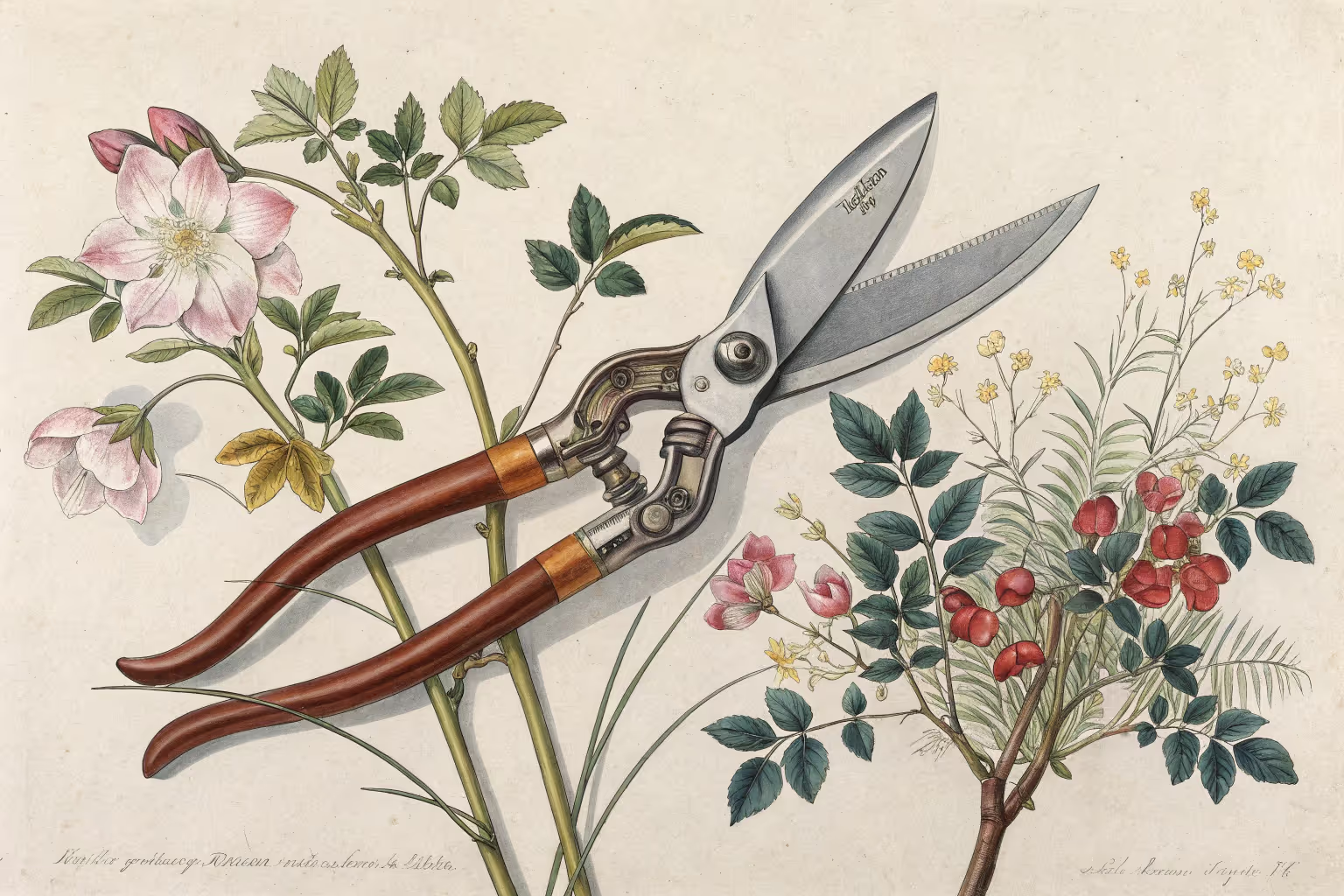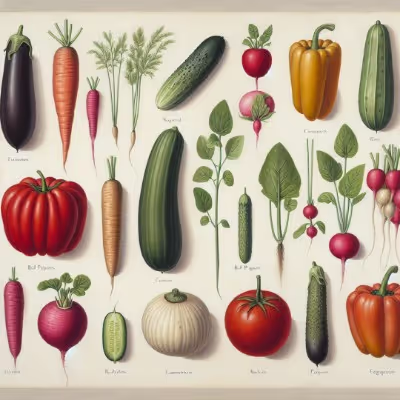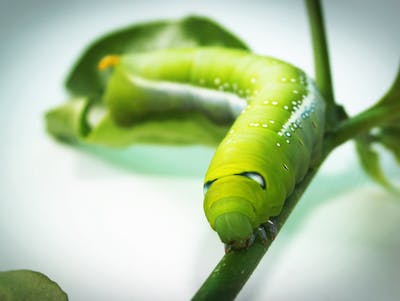Why Do You Need Pruning Shears?

Pruning shears
Pruning shears trim away excess growth, shape unruly shrubs, and boost overall plant vigor. Grab a pair of clean, sharp pruning shears to train young trees, remove dead branches, and enhance flower production. Good pruning shears turn tangled chaos into lush order—here’s how to choose yours and prune like a pro.
Cheatsheet: Pruning Shears Essentials & Smart Use
✂️ Why Use Pruning Shears
- Faster & cleaner than knives or scissors
- Reduces disease risk by sealing wounds
- Boosts yield, nutrition, and plant health
- Prevents overgrowth & strengthens structure
- Improves air & light for self-sufficient gardens
- Studies: Up to 30% more flowers/fruit with regular pruning
🪴 Common Uses
- Shape roses, shrubs, perennials, fruit trees
- Remove dead, diseased, or crossing stems
- Harvest herbs & veggies cleanly
- Cut stems up to 3/4 in (2cm) diameter
🛠️ Tools and Products You'll Need
- Bypass or anvil pruning shears
- Sharpener or hone
- Rubbing alcohol (disinfectant)
- Work gloves
🌱 How To Use Pruning Shears
- Wear gloves for safety.
- Disinfect blades with alcohol.
- Choose the right cut: angled for stems, flat for woody.
- Trim just above leaf nodes or buds for healthy regrowth.
- Cut cleanly; avoid crushing stems.
- Wipe clean, dry, and store after use.
🧴 Maintenance Tips
- Sharpen blades monthly for best results
- Oil pivot points after cleaning
- Store dry to prevent rust
Plants respond to clean, precise cuts like athletes respond to a good physio session. I can shape a shrub, redirect energy, and harvest without bruising tissue, all in minutes.
I learned this the hard way on an old Bourbon rose that sulked for a season after rough cuts. I switched to sharp bypass shears, and the next spring it bloomed like it had a point to prove.
Tools matter, and matching the blade style to the task saves plants and wrists. Here is the quick field guide I actually use.
- Bypass shears: Two blades pass like scissors, best for live green wood up to about 0.75 inch or 19 mm.
- Anvil shears: Single blade meets a flat plate, good for dead, hard wood where compression bruising is less of a problem.
- Ratcheting pruners: Mechanical advantage for limited grip strength, workable on dense stems with staged squeezes.
- Micro-tip snips: Needle-nose for herbs, flowers, and soft tissue, think 0.25 inch or 6 mm and under.
Clean cuts reduce wound area, speed closure, and lower disease entry. Ragged cuts invite decay, and you pay later in dieback and weird growth.
Royal Horticultural Society: “Use bypass secateurs on live stems to avoid crushing; keep blades sharp for a clean cut.” Source: RHS pruning guidance.
International Society of Arboriculture: “Make cuts just outside the branch collar, never flush, to protect the natural defense zone.” Source: ISA Best Management Practices.
Oregon State University Extension: “Disinfect tools with 70% alcohol between plants when disease is present.” Source: OSU Extension Plant Pathology notes.
I judge pruners by steel, geometry, and how they feel after two hours in rain. Price matters, yet fit and serviceable parts matter more over the long haul.
- Blade steel: High carbon SK-5 or equivalent holds an edge and resharpens cleanly, stainless resists rust but can be softer.
- Forged vs stamped: Drop forged heads take abuse and can be rebuilt, stamped bodies run lighter but may flex.
- Spring type: Volute or coil springs track straight and resist clogging, keep a spare in your kit.
- Lock and pivot: A positive thumb lock that stays put, and a micro-adjustable nut so you can tune blade tension.
- Ergonomics: Contoured grips, optional rolling handle for repetitive cuts, and sizes for small, medium, or large hands.
- Left-handed models: The bevel and lock need to be reversed, a proper lefty model changes everything for southpaws.
- Sap groove and wire notch: Sap grooves shed gunk, a wire notch saves the edge when you clip a tie.
- Serviceability: Replaceable blades, springs, and bumpers mean decades of use, and less waste.
- Price ranges: Solid performers start around 30 to 50 USD or 28 to 47 EUR, premium rebuildable tools run 60 to 100 USD or 56 to 94 EUR and up.
I have broken, rebuilt, and retired enough pairs to be picky. These models earn their keep.
- Felco 2: Classic bypass, replaceable everything, easy to tune, about 60 to 80 USD or 56 to 75 EUR.
- Felco 9: True left-handed twin to the 2, saves wrists and awkward angles, similar price.
- ARS VS-8Z: Hard SK steel that takes a wicked edge, crisp action, about 60 to 85 USD or 56 to 80 EUR.
- Okatsune 103: Minimalist, drop forged, no nonsense, light and fierce, around 55 to 75 USD or 52 to 70 EUR.
- Bahco PX series: Ergonomic frames with size and handle options, strong cutters, roughly 70 to 100 USD or 66 to 94 EUR.
- Corona Classic BP 3180: Durable budget workhorse with spares available, about 30 to 45 USD or 28 to 42 EUR.
- Fiskars Micro-Tip: For deadheading and herbs, springy and precise, around 15 to 20 USD or 14 to 19 EUR.
If a pruner forces you to choke up or splay your fingers, it will tire you and twist cuts. Measure across your palm and match to handle size, then test one-handed locking and full-stroke closure.
- Small hands: 6 to 7 inch bodies, compact heads, or a rolling handle to reduce grip fatigue.
- Medium to large hands: 7.5 to 8.5 inch tools with deeper throat and more leverage.
- Arthritis or tendinopathy: Ratcheting models or geared pruners reduce effort, and lighter spring tension helps.
Technique turns a good tool into plant therapy. I follow this sequence on site.
- Target the cut with the blade side toward the plant, anvil side out, so the live tissue gets the clean slice.
- Cut at about 45 degrees above an outward-facing bud on stems, 0.25 inch or 6 mm above it.
- For branches with collars, cut just outside the swollen collar, never flush to the trunk.
- Support the drop so fibers do not tear, then make a single, confident squeeze without twisting.
- Stay within your tool’s capacity, move to loppers above 0.75 inch or 19 mm.
- If disease is present, wipe blades with 70 percent isopropyl alcohol between plants.
I sharpen more than I think I need to, and it pays every time. Five minutes after a job beats fifteen later.
- Clean: Wipe sap with a rag and a splash of isopropyl alcohol, avoid soaking in bleach unless you rinse and dry immediately.
- Sharpen: File the beveled edge at about 20 to 25 degrees, one direction, then deburr the flat side lightly.
- Lubricate: A drop of light oil on the pivot and a thin film on the blade stops rust, camellia oil works nicely.
- Tension: Tighten so the blades kiss without binding, test on paper and new growth.
- Storage: Dry, locked, out of the bucket where metal sits in water, and above 32 F or 0 C to avoid condensation cycles.
- Spares: Keep a spring and a bumper in your kit, they vanish at the worst time.
Use the right tool and plants recover faster. Your hands will thank you too.
- Pruning shears: Live stems, flowers, fruiting wood, precision shaping up to 0.75 inch or 19 mm.
- Snips: Harvests, deadheading, nursery work on soft tissue, surgical detail.
- Loppers: Two-handed leverage for 0.75 to 1.5 inch or 19 to 38 mm branches.
- Pruning saw: Anything above lopper range or buried, tight spaces where a clean kerf matters.
Roses respond to angled cuts and clean deadheading, which keeps petals clean in rain. Herbs like basil and mint stay bushy if I tip-prune with micro snips every week.
Tomatoes and peppers need sucker control, and sharp shears avoid stem crush that invites blight. Fruit trees push better shoot distribution when I thin with bypass blades in late winter.
Tool misuse hurts plants and people. These are easy to fix.
- Cutting oversized wood with hand pruners, which twists the blade and crushes cambium.
- Flush cuts into the collar that slow healing and invite decay.
- Dull blades that tear bark and force extra grip, which leads to tendon pain.
- Skipping disinfection when fire blight or canker is present.
- Leaving pruners unlocked in a pocket, one jump and you have a thigh story you did not want to tell.
Best for roses? Bypass pruners with narrow noses, ARS VS or Felco 2, keep them razor sharp.
For fruit trees? A sturdy bypass with replaceable parts, plus loppers and a folding saw for anything over 19 mm.
Small hands? Try compact frames like Felco 6 or Bahco small handles, and keep stroke full so you do not chew stems.
Left-handed? True lefty models like Felco 9 reverse the bevel and lock, which makes cuts cleaner and safer.
Arthritis or limited grip? Geared or ratcheting pruners, light springs, and frequent sharpening to lower force.
Budget pick? Corona Classic holds up and has parts, spend your savings on a good stone.
I keep a zip pouch with a stone, oil, alcohol, and a spare spring, and it has saved more planting days than any raincoat. On a cold March prune at 36 F or 2 C, sharp blades and warm gloves kept the crew steady while sap ran slow.
On summer harvests in 92 F or 33 C, sap turns gluey, so I wipe every third plant and keep moving. The rhythm feels like cooking service, fast hands, clean tools, repeat.
I lean on organizations that test and teach, and their advice tracks with what I see on hedges and orchards. Here are the lines I keep in my notebook.
Cornell Cooperative Extension: “Make heading cuts to just above a healthy bud, leaving a short stub to avoid dieback into the bud.” Source: Pruning Shade Trees and Shrubs.
University of Florida IFAS: “Use 70% isopropyl alcohol for quick disinfection, rinse and oil tools after bleach.” Source: Sanitation in Plant Disease Management.
Royal Horticultural Society: “Sharp, clean cuts heal faster and reduce risk of disease.” Source: RHS Pruning and Training.
International Society of Arboriculture: “The branch collar contains protective chemicals that limit decay, retain it.” Source: ISA Tree Pruning BMP.

Want smarter plant choices? 🪴
Frequently Asked Questions About Pruning Shears
How Often Should Pruning Shears Be Sharpened?
Sharpen your pruning shears once or twice each gardening season, depending on how often you wield them. A little sharpening session maintains a clean cut, protecting your precious plants from disease and damage.
What Material Makes for the Highest-Quality Pruning Shears?
Choose carbon steel blades—they slice precisely, holding their sharpness longer than stainless steel. Carbon steel blades maintain a sharp edge, resist rust if cared for properly, and satisfyingly snap through stems and branches.
Are Pruning Shears Suitable for All Types of Plants and Branches?
No single tool does it all. Pruning shears masterfully clip branches up to about half an inch thick. For thicker branches, let loppers or pruning saws handle the heavy lifting.
How Should I Maintain My Pruning Shears?
Keep them clean and dry after use. Regularly oil the blades to prevent rust. Store the shears indoors, away from moisture, and they'll remain reliable companions season after season.
What's the Difference Between Bypass and Anvil Pruning Shears?
Bypass pruners slice like scissors, ideal for fresh, green growth. Anvil pruners clamp down like a chef's cleaver, best suited for dead, woody stems. Choose your weapon according to the target.
Can Pruning Shears Spread Plant Disease?
Absolutely—they can become carriers of fungal spores or bacteria. Disinfect the blades regularly with rubbing alcohol or diluted bleach between uses, targeting different plants to prevent unwanted microbial hitchhikers.
Pruning shears are the workhorse of any well-tended garden. A sharp, reliable pair lets you shape, control, and rejuvenate your plants with confidence. From snipping unruly branches to deadheading blooms, pruning shears help your garden breathe and grow stronger. The right cut at the right time means healthier plants, better harvests, and fewer headaches down the line. Take care of your shears, and they’ll take care of your garden—season after season. If you’re building up your toolkit, check out this guide to gardening tools for more essentials. In the end, pruning shears aren’t just another item in the shed—they’re the extension of your own hands, shaping the story of your garden one clean cut at a time.
The Prepper’s Guide to Pruning Shears Essentials
Select Durable Shears to Ensure Longevity
- Forged Steel Blades: Resist corrosion, maintain sharpness for years.
- Rubber-Coated Aluminum Handles: Prevent rust, minimize hand fatigue during prolonged use.
- Replaceable Parts Availability: Invest in brands offering interchangeable blades and springs for prolonged tool life.
Shears for Self-Sufficient Food Production
- Fruit Tree Management: Seasonal pruning boosts fruit quality, increases yields by up to 30%.
- Medicinal Herb Harvest: Precision trimming maintains maximum potency and nutritional value.
- Sustainable Perennial Gardens: Proper pruning maintains soil fertility by reducing unnecessary organic waste.
Tool Maintenance for Emergency Preparedness
- Sharpen Regularly: Monthly sharpening increases efficiency, reduces injury risk.
- Sanitize Blades: Use rubbing alcohol between plants to eliminate disease spread, safeguarding vital crops.
- Weatherproof Storage: Store shears in airtight containers; prevents moisture damage, prolongs equipment lifespan.
Multipurpose Applications Beyond Gardening
- Firewood Preparation: Quickly clip small branches for kindling, aids efficient heating.
- Emergency First Aid: Trim splint materials or fabric quickly during urgent situations.
- Food Preparation Efficiency: Speedily cut herbs and edible plants for nutritional preservation.
Find out which plants will thrive in your garden!
Answer a few fun questions and get custom plant recommendations perfect for your space. Let’s grow something amazing together!

start your season



.avif)

